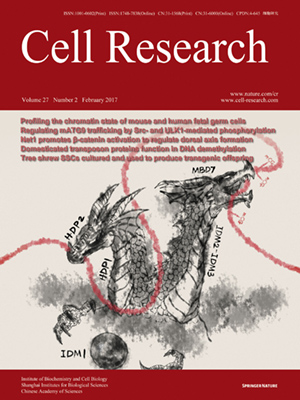
Volume 27, No 2, Feb 2017
ISSN: 1001-0602
EISSN: 1748-7838 2018
impact factor 17.848*
(Clarivate Analytics, 2019)
Volume 27 Issue 2, February 2017: 302-305
LETTERS TO THE EDITOR
Hypoxia potentially promotes Tibetan longevity
Yan Li1,2, Ming-Shan Wang2,3, Newton O Otecko2,3, Wen Wang2,3, Peng Shi2,3, Dong-Dong Wu2,3 and Ya-Ping Zhang2,3
1State Key Laboratory for Conservation and Utilization of Bio-Resources in Yunnan, Yunnan University, Kunming 650091, China
2State Key Laboratory of Genetic Resources and Evolution, Chinese Academy of Sciences, Kunming 650223, China
3Kunming College of Life Science, University of Chinese Academy of Sciences, Kunming 650204, China
Correspondence: Dong-Dong Wu, E-mail: wudongdong@mail.kiz.ac.cn; Ya-Ping Zhang,(zhangyp@mail.kiz.ac.cn)
The lifespans of model animals, such as Caenorhabditis elegans, have been demonstrated to be extended when they are subjected to hypoxic conditions in the laboratory1,2. In addition, wild mammals with hypoxic habitats, such as the naked mole rat that lives in burrow, and whales that must hold their breath as they dive, seem to live longer3,4,5. In stark contrast with observations in the laboratory, humans living under natural hypoxic environment of the Tibetan Plateau have generally been thought to have much shorter lifespans compared with people living at lower altitudes. No scientific ascertainment exists for this paradox, neither has the underlying genetic basis been resolved.
10.1038/cr.2016.105
FULL TEXT | PDF
Browse 1659


